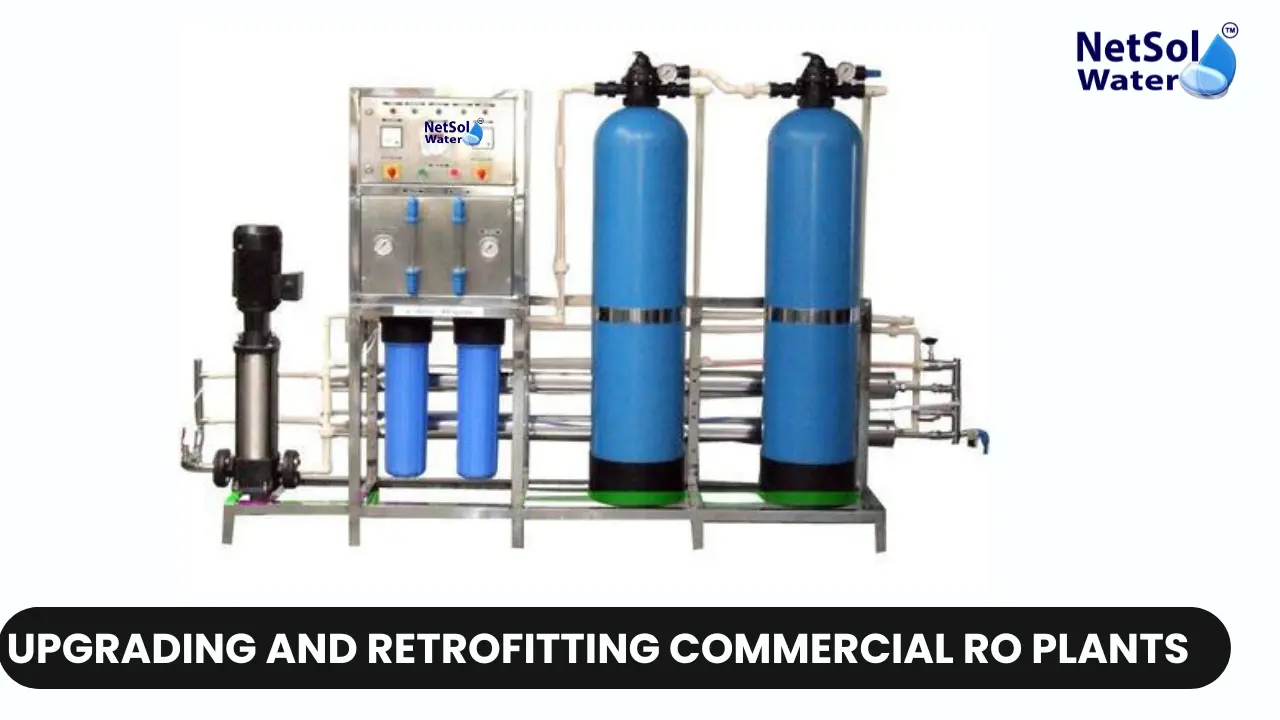Reverse Osmosis (RO) plants play a crucial role in delivering clean water across industries such as water treatment, food and beverage, and pharmaceuticals. Yet, with technological progress and evolving regulations, these facilities can become outdated or less effective. Upgrading and retrofitting commercial RO plants is essential for increasing performance, improving efficiency, lowering operational costs, and meeting current regulatory standards. We will look into the rationale behind upgrading, available options, and the steps involved in the process.
Reasons for Upgrading and Retrofitting
Companies may consider upgrading or retrofitting their commercial RO plants for many reasons. Firstly, aging equipment can lead to diminished performance and increased operational expenses as key components such as membranes, pumps, and valves degrade over time. Secondly, advancements in RO systems offer increased efficiency, good water quality, and decreased energy consumption, prompting a shift to newer technologies. Thirdly, changes in environmental regulations and water quality standards may necessitate upgrades to ensure compliance and avoid penalties.
Furthermore, as businesses expand, the demand for clean water may rise, prompting the expansion or enhancement of existing RO plants to meet the increased demand. Moreover, transitioning to more energy-efficient components like high-efficiency pumps and energy recovery devices can substantially lower operational costs and environmental impact. Lastly, certain industries like pharmaceuticals or electronics may impose stricter water quality requirements, compelling upgrades to the RO system to align with these standards.
Upgrading Options
When considering the upgrade or retrofitting of a commercial RO plant, several options exist. One choice is membrane replacement, wherein the limited-lifespan RO membranes are substituted with newer, more efficient ones. This swap can enhance water quality, boost productivity, and decrease energy consumption. Another option involves upgrading pumps and motors to more energy-efficient models, which can reduce operational costs and enhance overall system performance.
Another upgrading option is implementing advanced automation and control systems, which can optimize plant operation, improve monitoring and data collection, and enable remote monitoring and control. Enhancing the pretreatment system, such as by incorporating multimedia filters or antiscalant dosing systems, can prolong RO membrane lifespan and enhance overall system performance. Installing energy recovery devices, like pressure exchangers or turbines, can significantly diminish the energy needed for high-pressure pumping, leading to notable cost savings.
Lastly, if the existing RO plant struggles to meet increased demand, system expansion may be necessary, involving the addition of extra membrane trains or the transition to larger components. It's crucial to thoroughly assess the specific needs and requirements of the RO plant before determining suitable upgrading options and to collaborate with experienced professionals and reputable suppliers to ensure compatibility and desired improvements.
Retrofitting Process
Retrofitting a commercial RO plant involves several steps to ensure a smooth and successful transition. The first step is conducting a comprehensive assessment and planning phase, which involves evaluating the existing RO plant's performance, efficiency, and compliance with regulations. Based on this assessment, a detailed plan is developed, outlining the scope of work, timelines, and any necessary shutdowns or downtime.
Once the upgrade or retrofit plan is finalized, the next step is sourcing and procuring the required components and materials from reputable suppliers and manufacturers, ensuring quality and compatibility with the existing system. Before the actual retrofitting process begins, the RO plant may need to be prepared and shut down, which may involve draining the system, isolating specific components, and preparing the site for the installation of new equipment.
The installation and integration phase is critical, involving removing outdated equipment, modifying piping and infrastructure, and integrating the new components with the existing system. Proper installation and integration are essential for ensuring seamless operation and avoiding any compatibility issues.
After the installation and integration are complete, thorough testing and commissioning of the upgraded or retrofitted RO plant are necessary. This step ensures that the new components are functioning correctly, and the entire system meets the desired performance and water quality standards.
Finally, providing adequate training to operators and maintenance personnel is crucial for ensuring the proper operation and maintenance of the upgraded or retrofitted RO plant. Additionally, updating the system documentation, manuals, and standard operating procedures is essential for future reference and troubleshooting.
Throughout the retrofitting process, it is essential to follow proper safety protocols, comply with relevant regulations, and minimize any disruptions to ongoing operations. Working with experienced professionals and adhering to best practices can help ensure a successful retrofitting project.
Conclusion
Upgrading and retrofitting commercial RO plants is a critical process that can significantly improve their performance, efficiency, and compliance with regulations. By handling issues like aging equipment, evolving technology, regulatory shifts, rising demand, energy efficiency, and water quality standards, companies can ensure their RO plants operate optimally and cater to their specific requirements.
A variety of upgrading options are available, including membrane replacement, pump and motor upgrades, automation and control system enhancements, pretreatment system improvements, energy recovery device installations, and system expansion. These options offer solutions for addressing diverse challenges.
The retrofitting process involves several stages, including assessment and planning, sourcing and procurement, preparation and shutdown, installation and integration, testing and commissioning, and training and documentation. Diligent execution of these steps ensures a seamless and successful transition.
Do you need an advice or assistance on selecting the best water and waste water treatment unit? We have solutions for all your problems!
Let us now your problem, our experts will make sure that it goes away.
For an assistance or related query,
Call on +91-965-060-8473
Or write us at enquiry@netsolwater.com



